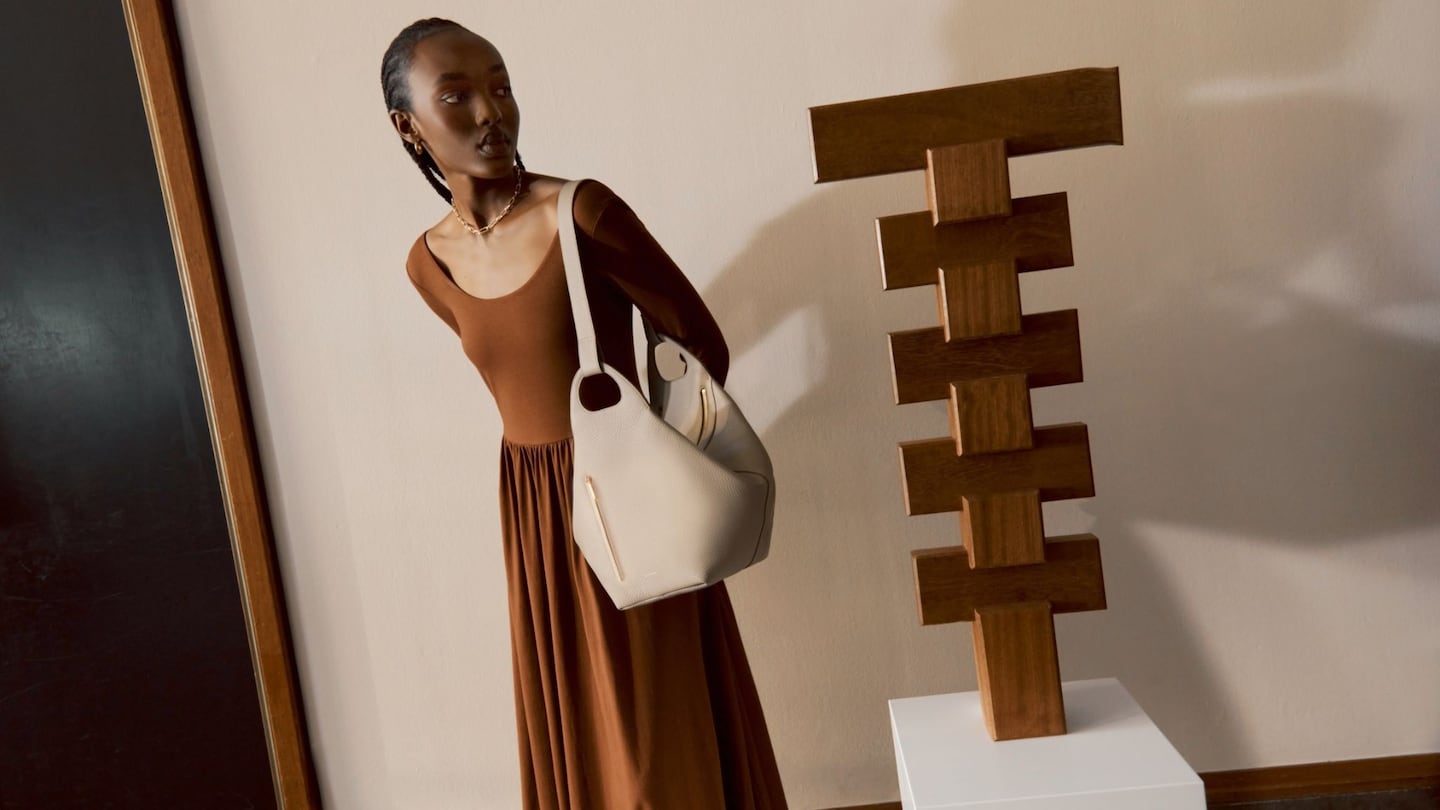
Agenda-setting intelligence, analysis and advice for the global fashion community.

Agenda-setting intelligence, analysis and advice for the global fashion community.

Cuyana wants to be a go-to for more than just everyday handbags.
Over its decade in business, the digitally-native brand has developed a following for its leather totes and crossbodies, historically done in neutral tones and classic shapes. But last September, the brand introduced a limited-edition line of bags with more fashion-centric details like double-faced leather and statement zippers. One, the $500 Paloma shoulder bag that was spotted on Meghan Markle, the Duchess of Sussex, has sold out three times since its initial release.
Following that strong response, this spring, the brand will release a larger bag collection, including styles in embossed snake prints and oversized bucket bags for $500. Future collections will feature more expensive materials like lambskin leather, with prices as high as $800.
It’s all part of Cuyana’s push to move further upmarket, where it can hopefully compete with contemporary luxury labels like Khaite and Toteme — albeit at more affordable prices. The brand, which has sold more than $300 million in goods since launching in 2014, believes its next stage of growth will come not from luring new customers, but in convincing its existing ones — typically professional Millennial women — to see its newer, higher-end bags as status symbols worth a steeper price tag.
ADVERTISEMENT
“The best brands continue to reinvent themselves through time,” said Karla Gallardo, Cuyana’s co-founder and chief executive. “We’re starting to add to the line those bags that now [our customers] can start to afford as she’s moving up because we don’t want to lose her too quickly to luxury. She will buy some luxury brands, but we want to make sure she can remain with us.”
This focus on increasing loyalty with existing customers, rather than courting new ones, has become a common refrain among profitable DTC start-ups (Cuyana says its been profitable since 2018). Rising competition and a softer economic climate has made consumers more fickle, and it’s often easier to get a consumer who has already shopped with the brand to make another purchase than to find another altogether.
As such, Cuyana won’t invest in a flashy campaign to promote the new line. Instead, it will continue to give loyal customers early access to its new bag. It‘s also banking on its customers to share content about the products on Instagram and TikTok. The brand expects this low-cost marketing approach, which it has traditionally applied to its core collection, to help it triple profits year over year in 2024.
“If you as a brand can show how you have true loyalty … that is a huge increase in value of your brand,” said Nora Kleinewillinghoefer, a partner in the consumer practice at management consulting firm Kearney.

Still, Cuyana needs to recontextualise its products if it wants its elevated offering to resonate. Everlane, for example, grew sales 1 percent year over year in 2023 even after hiring former Marni designer Mathilde Mader to give its product offering a more fashion-oriented revamp.
The brand has to start “showing up in some new places and spaces that don’t break their own mandates in terms of what they’re looking to do around investment and spend,” said global brand advisor Rebecca Robins.
For its part, Cuyana has partnered with more fashion-focussed influencers and newsletter writers like Jenny Walton, Becky Malinsky and Laura Reilly to create content as well as host in-person events. In the next three months, the brand — for which DTC still represents all of its sales — will seek out retail partners to carry its classic and higher-end goods, including specialty multi-brand stores.
But in expanding their reach, brands must remember what consumers resonated with in the first place, said Gwen Miller-Aceto, founder of brand consultancy Gema Mode. In that sense, it’s wise for Cuyana to focus on its most popular product category, bags, in its move upmarket.
“You need to test new products thoughtfully … enough to register a healthy read from the consumer but not dominate the collection and alienate the customer who helped get them to where they are now,” Miller-Aceto said.
Editor's Note: This story was updated on 11 March to include Everlane's 1 percent year-over-year sales growth in 2023.
Founder Michael Preysman and his investors are back in growth mode after implementing cost cuts and changes to the product mix last year. Whether Everlane can find a new leader to make it the sales juggernaut it's always dreamt of being will be a test case for whether late-stage start-ups can escape the direct-to-consumer curse.
As consumers tighten their belts in response to inflation and the risk of recession, brands are seeking ways to tell consumers their products have value.
The leather accessories startup has its latest funding from private equity firm H.I.G. Capital, and plans to use the capital to open new stores and improve its supply chain.

Malique Morris is Direct-to-Consumer Correspondent at The Business of Fashion. He is based in New York and covers digital-native brands and shifts in the online shopping industry.
Senior correspondent Sheena Butler-Young and executive editor Brian Baskin are joined by e-commerce correspondent Malique Morris to explore how brands are offering affordable alternatives to luxury goods, and reshaping consumer expectations in the process.
With rising competition to acquire and retain customers online, digitally native start-ups are determining how to strike a balance between developing their own e-commerce features in-house and partnering with external software providers.
Start-ups like Quince and Italic that sell affordable basics made in the same factories as high-end brands are generating massive growth in appealing directly to middle-class shoppers who don’t want to resort to Shein hauls.
The upside for online sales may be lower than many retailers anticipated. Physical stores and social commerce could make up the gap.